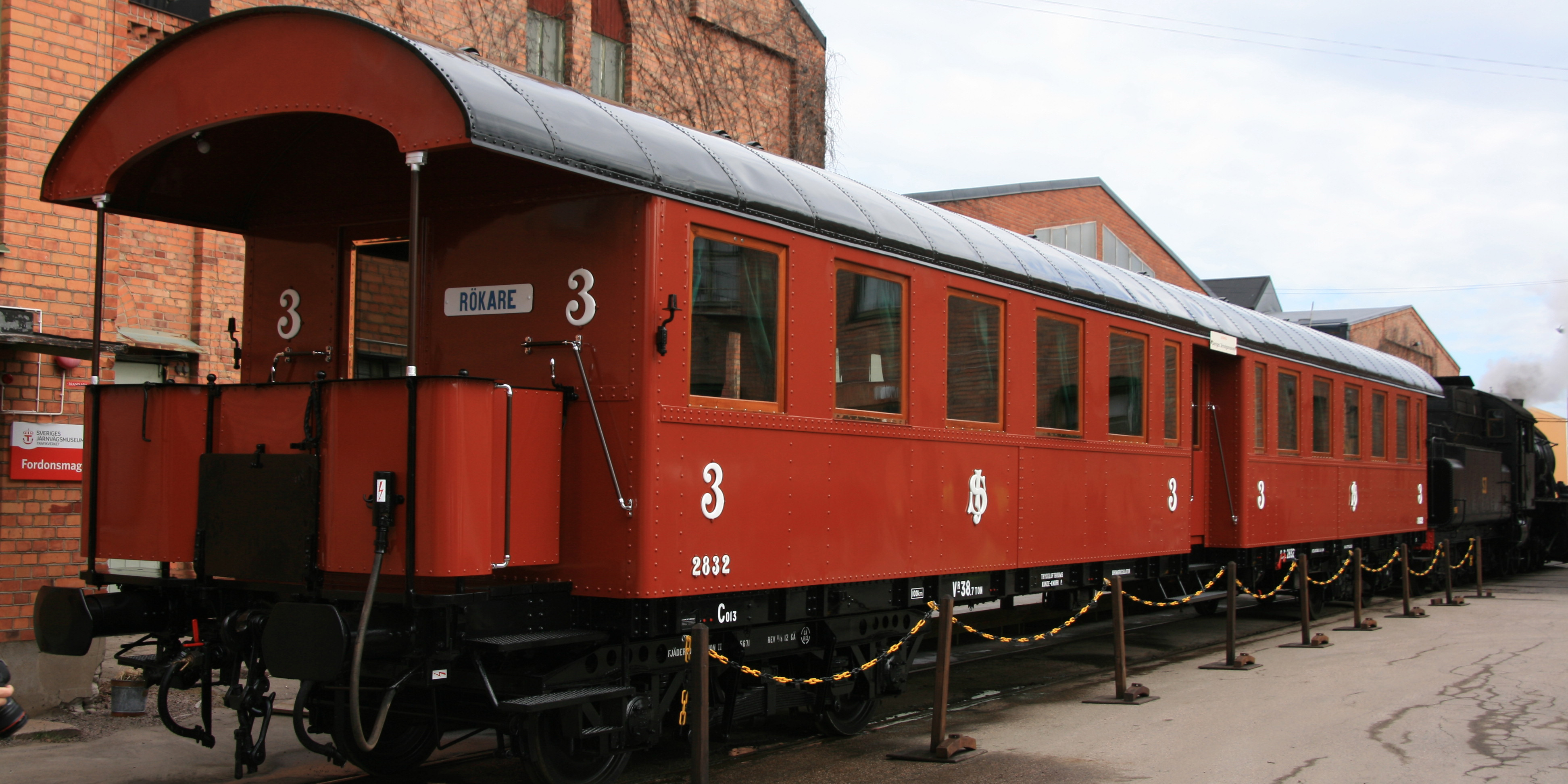
Third class carriage Co13 2832
In the early 20th century, Stockholm was growing rapidly and many of the city’s inhabitants were moving out to suburbs outside the city. Most of these suburbs have a railway or tram station. To enable people to travel smoothly between their homes and the city centre, special local train services were introduced.
There were short distances between stations, so it was important to be able to get on and off the train easily. SJ’s first bogie carriage for local trains retained traditional end platforms with doors at the short end, but reserved the centre of the carriage for a vestibule and double doors on the side of the carriage.
This solution proved to be successful and is still used today in modern commuter and metro trains. The idea originated in the 1920s when two smaller two-axle carriages with open end platforms facing each other were joined together with a common bogie under the mating sections, whose platforms were built in.
Carriage 2832 has undergone extensive restoration that was completed in 2013. The carriage now has a design similar to the first modernisation with new bench-style seats at the end of the 1930s. By then, spray painting had also been introduced in SJ’s workshops. A railway carriage was usually repainted every five or ten years. In order to achieve an appearance typical of the period, the museum's carpenters manufactured new windows based on the original drawing, and the welded roof has regained the non-load-bearing rivet joints that originally held the roof panels together.
Because the carriage does not have seat numbering, it is not possible to reserve a specific seat.
Manufactured
Kockums mekaniska verkstad, 1931. Out of 21 manufactured, 6 remain to this day.
Seats
104
Length
23.5 metres
Weight
39 tonnes
Maximum permitted speed
100 km/h